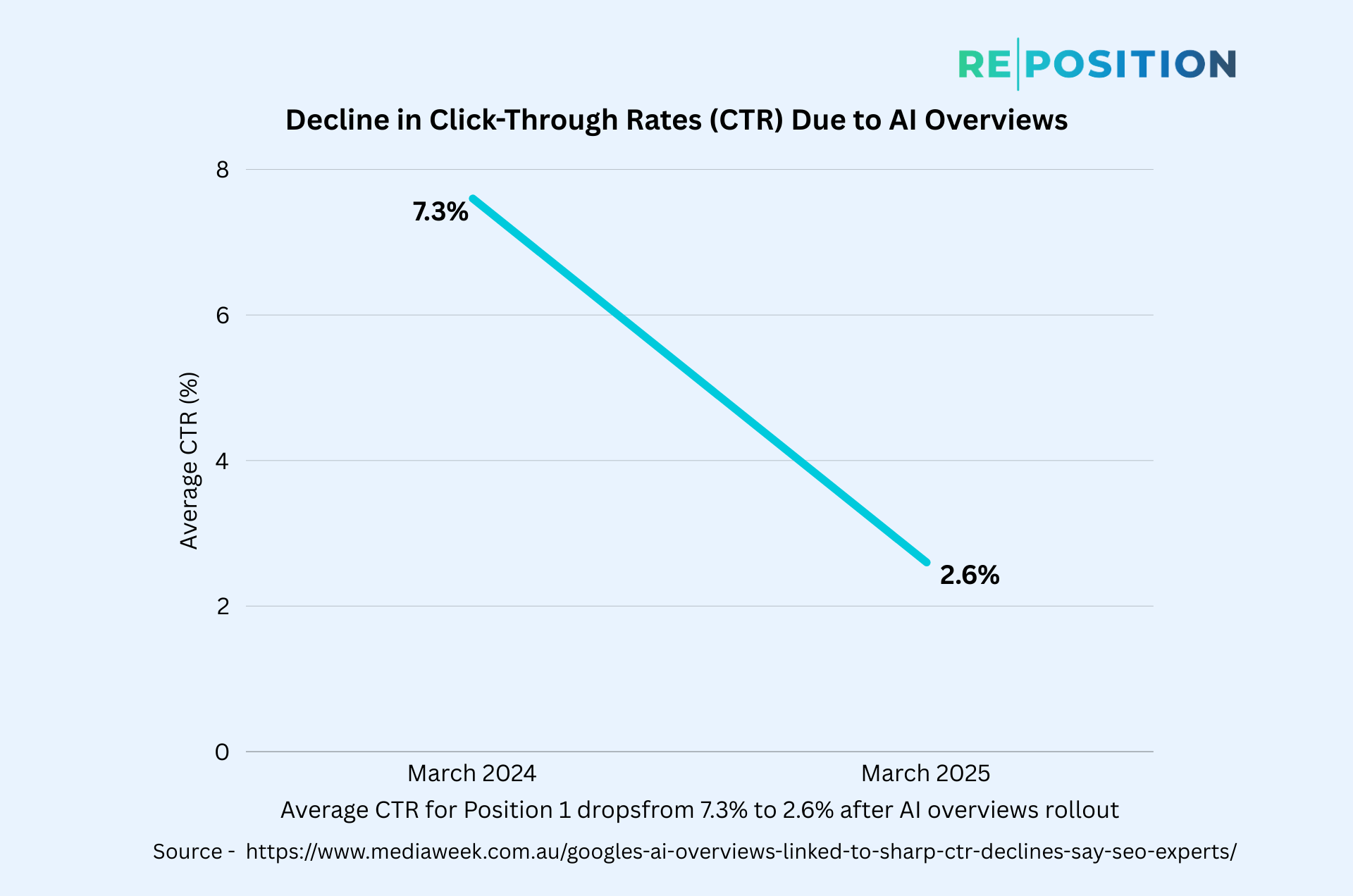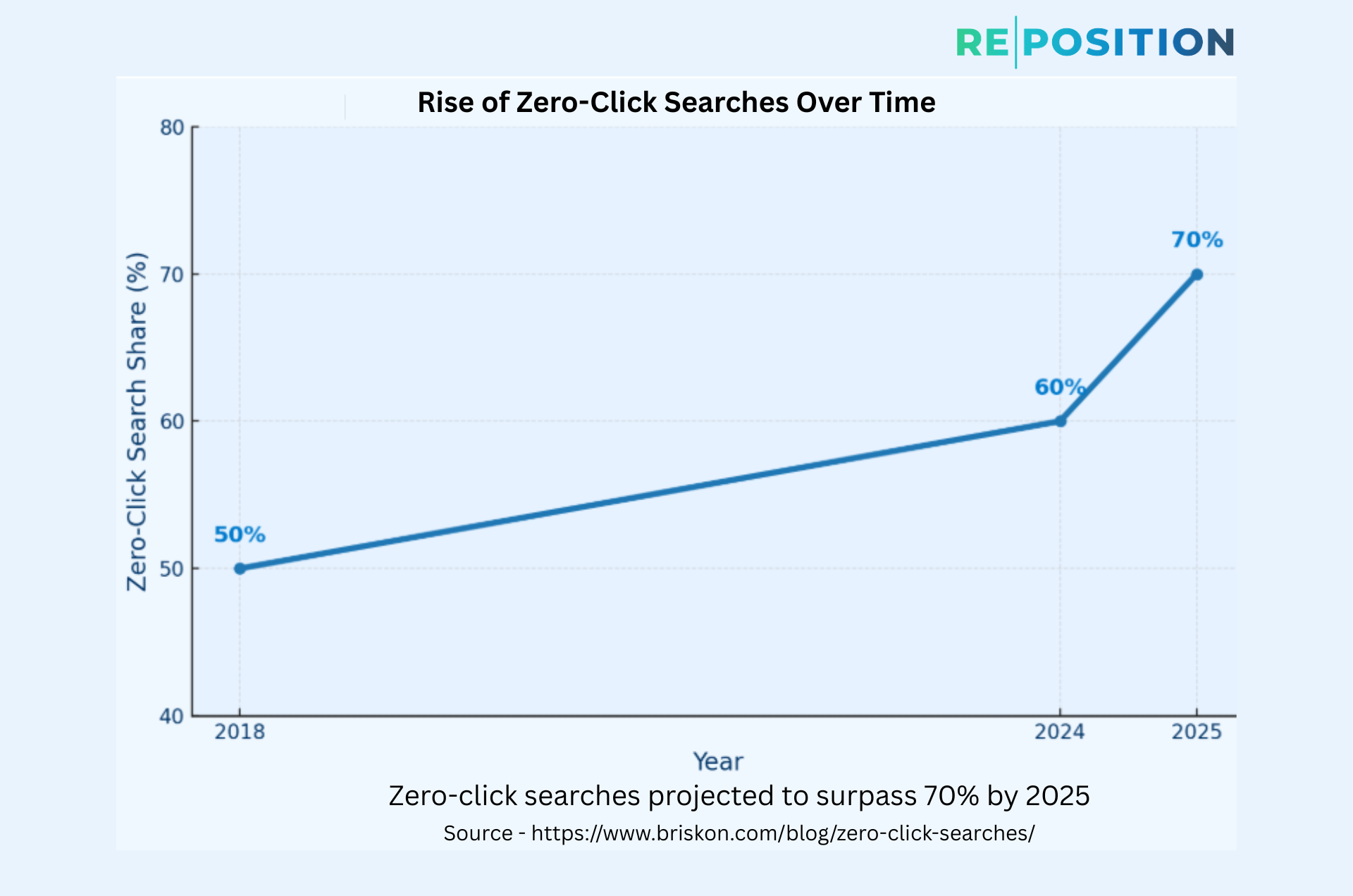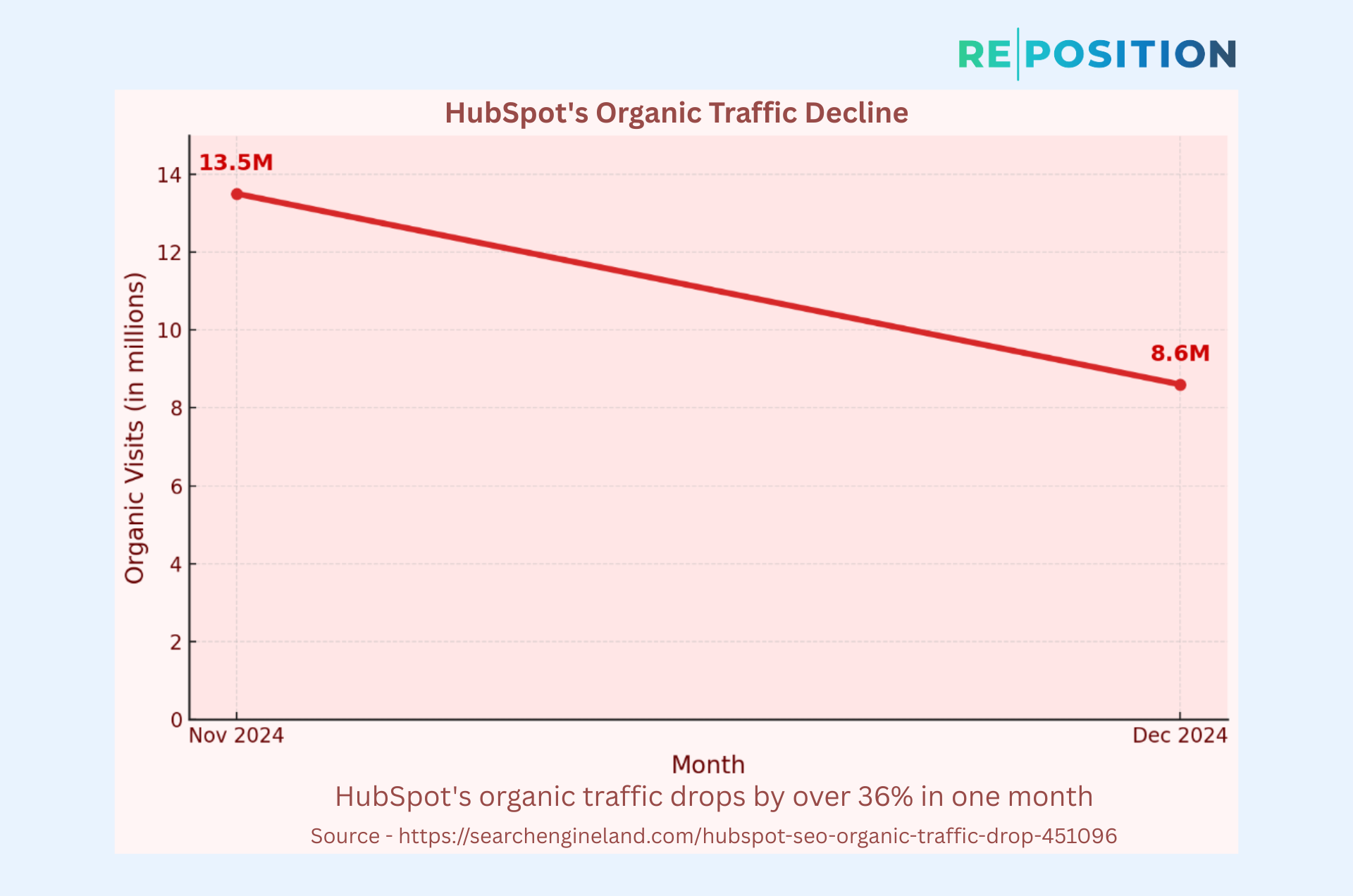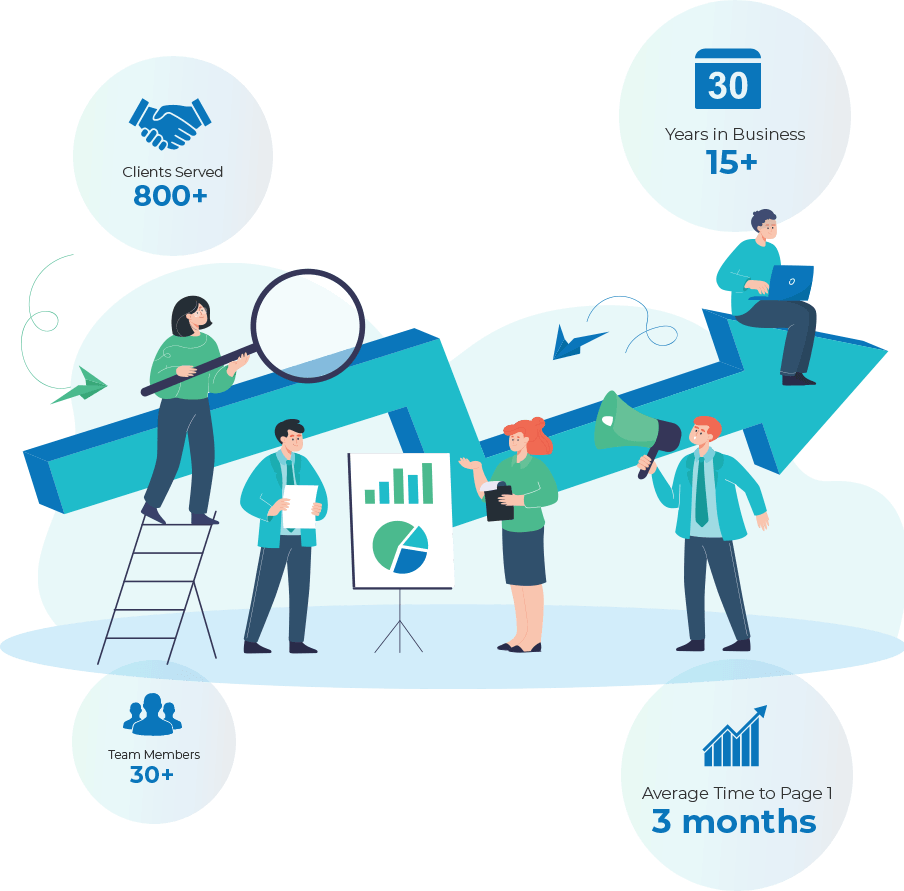Search engines are no longer the gatekeepers of the internet they once were. The traditional method of typing a query into Google and clicking through blue links is being disrupted. In 2025, AI search interfaces like ChatGPT, Perplexity, and Bing Copilot are increasingly offering answers directly in the interface, no clicking required. Users now expect faster, context-aware, conversational results. This shift is reshaping not only how we search but also how traffic flows across the web.
The Impact on Organic Traffic
Click-Through Rates Are Plummeting
Google’s new AI Overviews feature, which directly answers user queries within the search results, has caused a noticeable drop in click-through rates (CTR). In some industries, CTR has reportedly dropped by up to 50%.

Zero-Click Searches Dominate
Over 60% of searches now end without a single click. These “zero-click” interactions, where the query is answered directly in the interface, are becoming the norm. For website owners, this means that even when they rank, they might not receive any traffic.

Case Studies: Real-World Impacts
HubSpot’s Traffic Drop
HubSpot, a long-standing content leader, saw its organic traffic fall from 24 million monthly visitors in 2022 to just 16 million by late 2023, with further losses into 2025. This decline aligns closely with the adoption of AI-generated answers in search engines.

Retail Gains from AI Search Interfaces
While some websites lose traffic, others gain. U.S. retail websites have seen a 1,200% increase in traffic from AI sources like ChatGPT and Perplexity from July 2024 to February 2025, largely driven by conversational product recommendations.

The Emergence of AI-Driven Search Platforms
Perplexity’s Rise
Perplexity AI, a conversational search engine, now handles over 600 million monthly queries, making it one of the fastest-growing alternatives to Google. Its real-time source citation and cleaner interface have helped it build trust and popularity.

AI-Powered Shopping with OpenAI
OpenAI is integrating product recommendations directly into ChatGPT, allowing users to get AI-generated buying advice without searching through product listing pages. This threatens traditional affiliate and comparison websites.
Strategies for Adaptation
Introducing Generative Engine Optimization (GEO)
GEO is the new SEO. Instead of optimizing only for search engines, brands must now consider how AI tools extract, summarize, and present their content. This involves tighter structuring, high semantic relevance, and direct answers.
Structuring Content for AI
To stay visible in an AI-first world, websites should prioritize:
- Clear, well-structured semantic HTML
- Schema markup for content understanding
- Concise, accurate summaries
- Lists, FAQs, and question-based formatting
Conclusion: Navigating the New Search Paradigm
The era of traditional SEO isn’t over, but it’s changing rapidly. AI Search Interfaces are filtering, curating, and sometimes even replacing the information users would have once found on your website. To thrive in 2025 and beyond, content creators must shift toward AI discoverability, embracing the blend of old-school SEO and new-school AI optimization.

 SEO Services
SEO Services  Request a Quote
Request a Quote
 London
London
